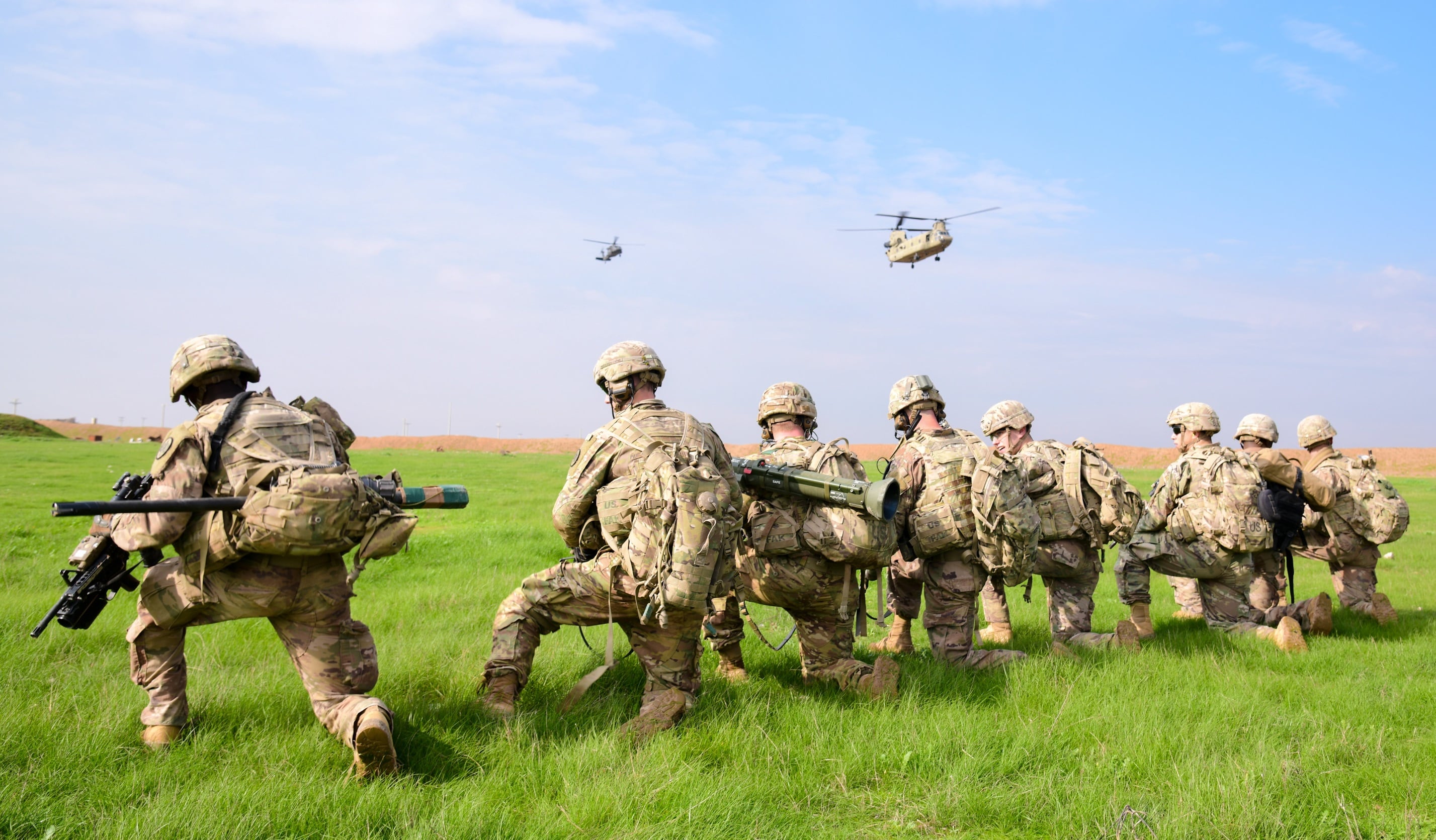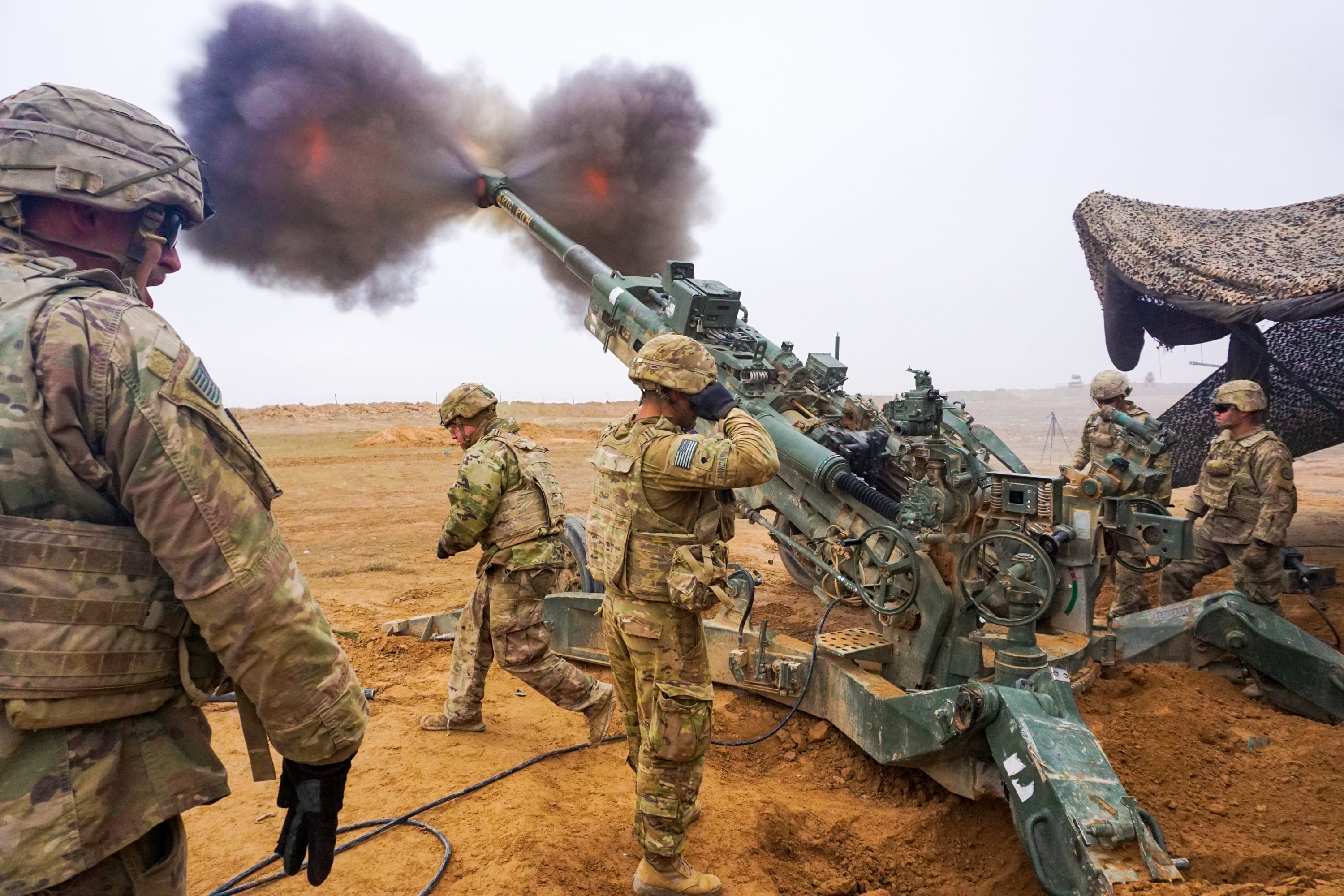The Army’s 3rd Cavalry Regiment got back from a deployment to Iraq, Syria and Kuwait in February, during which the soldiers earned roughly 30 Combat Infantry Badges and 30 Combat Action Badges, fired more than 5,000 rounds from M777 Howitzers and helped defeat the Islamic State alongside their Iraqi and Syrian partner forces.
The regiment, nicknamed the “Brave Rifles,” deployed in May 2018. The unit witnessed an important transition for Iraq’s security forces, as the country attempts to fold into its apparatus the various Shia militias raised to fight ISIS and sometimes sponsored by outside nations like Iran.
But Lt. Col. Kent Park, the regiment’s 3rd Squadron commander, said that he didn’t observe any issues with the transition and lauded the discipline of their Iraqi and Syrian partners.
“We were operating in Iraq, but also we had a squadron headquarters and some elements in Syria that were providing force protection for operations there,” Park told reporters at the Pentagon Wednesday. “So we were in that whole geographic area.”
Regiment Command Sgt. Maj. Adam Nash cautioned that there were only a few kinetic activities that his troopers were actively involved in, which is a reflection of the advise and assist mission they undertook.
“Obviously we cannot control what the enemy does, so they [partner forces] can be the in lead but the enemy likes to do indirect fire, IEDs, all sorts of different tactics," Park said.
Some of the Brave Rifles troopers were positioned in the geopolitically tense region of northern Syria, including Manbij, where Turkish proxy forces have taken shots at American troops in the past, according to statements by U.S. officials last year.
RELATED

Park wasn’t able to speak to those past incidents, but said that troopers couldn’t always be sure which militia group was firing at them during each instance.
“The CIBs, those came while our troopers were on patrol,” Nash said. “As for the CABs, those were primarily awarded to our artillerymen ... they have to be within firing distance so they may have been engaged several times by either indirect or direct fires. It’s different for each one of the troopers.”
A large part of the Brave Rifles mission during their deployment involved providing artillery support for partner forces engaged in the final battle against ISIS in Syria’s Middle Euphrates River Valley.

Coalition allies, like the French, were also involved in the same fire support mission.
No Brave Rifles troopers received Purple Hearts or valor awards, but some received awards with the "C" device for combat actions, according to Park.
The regiment also participated in training up Iraqi forces during their deployment. Park, who last deployed to Iraq in 2005, said what he saw this time was “a very different Iraqi army than what I experienced during my first deployment."
“They are a battle-hardened force that has undergone a pretty significant experience in their fight against ISIS,” he said, adding that the biggest difference is a willingness from partners to aggressively lead combat operations.
The Syrian Democratic Forces have similarly cut their teeth in combat against ISIS, and neither partner force is looking to cede the fight to whatever extremist groups may attempt to emerge as insurgencies in liberated territory, according to Park and Nash.

The biggest areas that Iraqi and Syrian partners still need coalition support include intelligence, surveillance and reconnaissance assets and fire support missions from aircraft and artillery, Park said.
“We have some more advanced capabilities to help them find the enemy,” Park noted.
Gains have been made to train forward observers and others capable of coordinating call-for-fire missions within the Iraqi military. It takes time to develop and retain a deep bench of experts to make those gains permanent, he added.
Nash said the Iraqi Army has made huge leaps in fire-and-maneuver operations during combat, citing an example of an Iraqi unit that logistically moved mechanized vehicles more than 300 kilometers within a span of about three days and without coalition forces stepping in to prompt them.
“Now, that’s not symbolic of every Iraqi security forces, but you see these gains in different forces that are doing different things,” Nash said.
Kyle Rempfer was an editor and reporter who has covered combat operations, criminal cases, foreign military assistance and training accidents. Before entering journalism, Kyle served in U.S. Air Force Special Tactics and deployed in 2014 to Paktika Province, Afghanistan, and Baghdad, Iraq.





